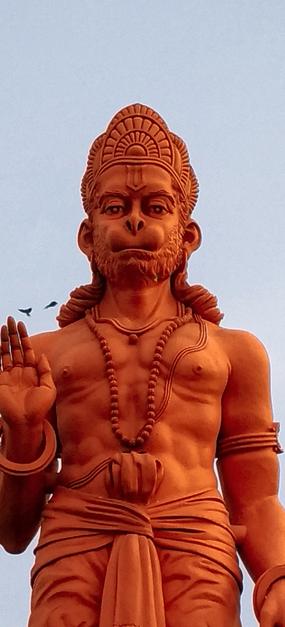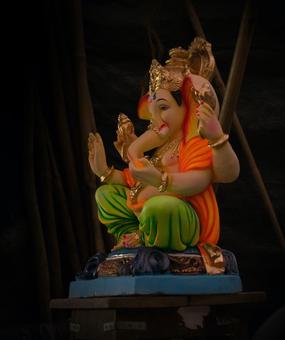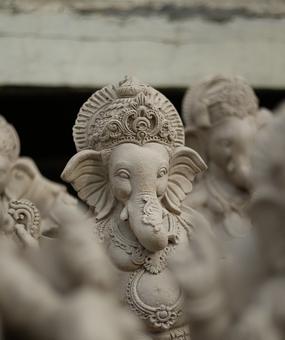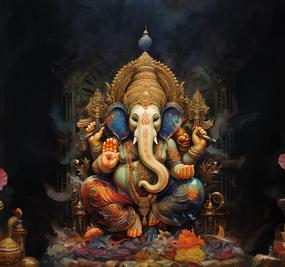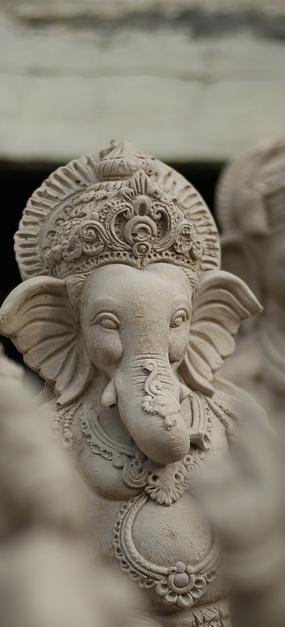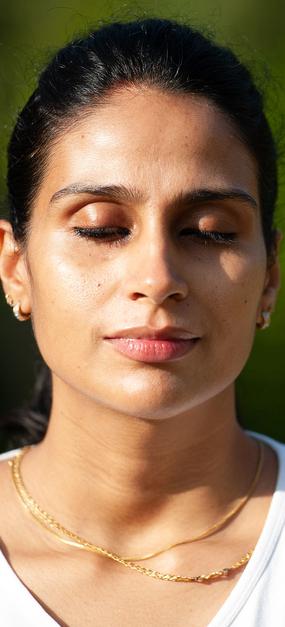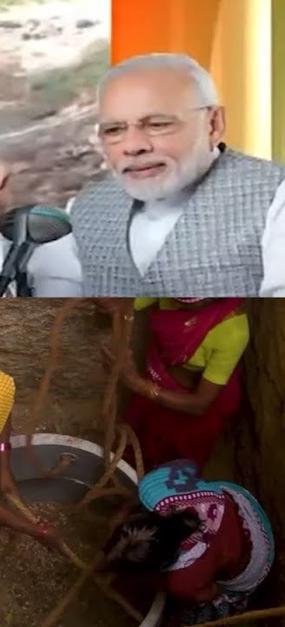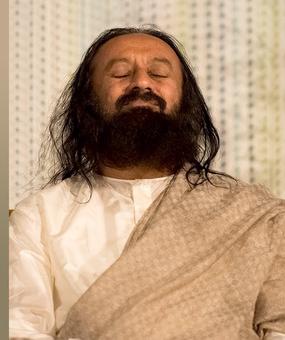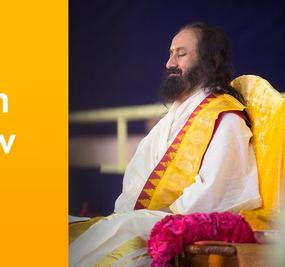The melodious Ganesha bhajan – Sukhkarta Dukhharta Varta Vignachi – is sung by thousands of devotees. However, not many will know that an inspired saint Samarth Ramdas, a Ram devotee, composed this beautiful Ganesha bhajan after he prayed to Mayureshwara. Enshrined in the Moregaon Ganesh Temple, this site also marks the beginning of the famed Ashtavinayak pilgrimage for devotees of Lord Ganesha. A set of eight Lord Ganesha temples near Pune, this pilgrimage prescribes a sequence of worship which must be completed at one go. Halts are allowed, of course. However the devotee must not return home. And the path must end where it began – at the Moregaon Ganesh Temple.
This 654-km-long worship trail covers caves, mountains, and the banks of rivers. Better infrastructure and facilities ensure the pilgrimage is completed within two-three days. Though one could choose to take longer. However, time must not matter when paying homage to these magnificent eight Ganesha temples in Maharashtra. For who can fathom to understand a devotee’s prayer and faith? A remarkable, indescribable experience which remains with the individual and inspires a listener.
The legends surrounding each of these famous Lord Ganesha temples are equally regaling. And creates a bond with the temple, and Lord Ganesha himself. Here’s a brief journey of mantras and legends through these famed eight Lord Ganesha temples in Maharashtra.
Moreshwar
The 1st temple in the Ashtavinayak yatra, come here again to complete the pilgrimage
Nije Bhuswanandjadbharat Bhumya Paratare
Turiyostire Paramsukhdevta Nivasasi
Mayuraya Nath Stawamasich
Ataswa sandhyaye Shivharini Brahmajanakam
Oh! Lord Mayureshwar of Morgaon, you stay on sage Jadbharat’s land, on the banks of river Karha that is known as Bhuswanand (happiness on land). Shree Moreshwar, who is far from three qualities, who is Swayambhu, who is without any form, who resembles Omkar, who is always in the fourth state of yoga and who rides on a peacock – may accept my salutation.
Believed to be the most important temple of the Ashtavinayak pilgrimage, Mayureshwara (Lord Ganesha riding a peacock) is believed to have slain the demon Sindhurasur on this spot. The three-eyed idol, with its trunk turned to the left, has a cobra (Nagaraj) protecting it. The idol also has two other idols of Siddhi (capability) and Buddhi (intelligence).
However, this is not the original idol which is said to have been consecrated twice by Lord Brahma.
Legend: To comfort his wife, Vinita, after an incident concerning their children, Sage Kashyap gave her a boon of having one more son in the form of a bird. The child was unborn when Lord Ganesha broke the egg and a peacock emerged. The two duelled. A distraught Vinita intervened, and the battle came to an end. Her peacock son chose to be Lord Ganesha’s vahaan and had a unique condition: Lord Ganesha should be known by his name. Thus was born the name, Mayureshwar or Moreshwar.
Siddhivinayak, Siddhtek
A sacred temple to gain siddhis, the 2nd stop in the Ashtavinayak yatra
Sthitho Bhimatire Jagadvan Kamen Harina
Vijetu Daityo Tachuti Malbhavou Kaitabhmadhu
Mahavighnarten Prakhar Tapasa Seitpado
Ganesh Siddhisho Girivarapu Panchjanak
Lord Vishnu, who was surrounded by fierce calamities, performed penance on mountain Siddhatek which is on the bank of river Bhima. On receiving a boon from Lord Ganesh, Lord Vishnu killed two demons Madhu & Kaitabh. Oh, Lord Siddheshwar Shree Ganesh, accept my salutation.
This is the only idol – in the Ashtavinayak pilgrimage – with the trunk pointing to the right. The original temple created by Lord Vishnu fell away, and later a shepherd saw the form of Lord Ganesha. He, along with other people, started worshipping that spot. Years later, a temple was built during the rule of the Peshwas.
Legend: Lord Vishnu was engaged in a 1000-year battle with the demons, Madhu and Kaitabha. Upon praying to Lord Ganesha, the sustainer of the universe – Lord Vishnu – received siddhis. And he vanquished the demons. Lord Vishnu created a four-door temple and put a statue of Lord Ganesha. Since Lord Vishnu achieved siddhi here, the elephant-headed God was called Siddhivinayak. Siddhtek or Siddhshetra became the name of the place.
Ballaleshwar, Pali
A swayanbhu idol awaits you at the 3rd temple in the Ashtavinayak yatra
Vedo Sanstuvaibhavo Gajamukho Bhaktabhimani yo
Ballaleravya Subhaktapal Narat; Khyat Sada Tishtati.
Kshetre Pallipure Yatha Kritayuge Chasmitha Laukike
Bhakterbhavite Murtiman Ganapati Siddhishwar Tam Bhaje
I worship Lord Ganesh, who is elephant headed, who has been praised in the Vedas, who is popular by the name of his devotee (Ballal), who protects his devotees and in this kritayuga who abodes in Pallipur or Pali.
Lord Ganesha, in the three-foot high idol of Ballaleshwar, has a rare appearance of wearing Brahmin clothes. Interestingly, the temple is shaped like the letter shree in the Devnagiri script.
Legend: Kalyansheth, a worried father, chastised his young son Ballal for his incessant worship of Lord Ganesha. One day, in a fit of rage, the father tied Ballal to a forest tree and told him to pray to Lord Ganesh for his rescue. Pray the boy did, and Lord Ganesha, himself, appeared in the form of a Brahmin. As he set the boy free, Ballal beseeched the Lord to reside in the region. A pleased Lord Ganesha agreed and resided in a stone, believed to be the idol of Ballaleshwar Vinayak.
Mahad Ganpati
Offer salutations to two Ganesha idols in the 4th stop of the Ashtavinayak yatra
Bhaktabhimani Ganaraj Ekam
Kshetre MadhaKhye Vardam Prasanam
Yastishtati Shree Vardo Ganesham
Vinayakasta Pranamami Bhaktam
I salute Lord Ganaraj who is a leader of Ganas, who is proud of his devotees and who lives at Mahad and has a pleasant appearance.
The original Ganesha idol was discovered submerged in a lake in the late 1600s. In 1725, the subedar of Kalyan built the temple again.
Legend: Gritsamav, a scholar, was once heartbroken upon hearing about his origin (he was not a Brahmin by birth). Gritsamav moved to the Pushpak forest and started a severe penance. Lord Ganesha heard his prayers and appeared before him. Gritsamav asked to be recognized as a Brahmin and he, then, asked Lord Ganesha to reside in the Puspak forest. Lord Ganesha granted both wishes. Gritsamav called Lord Ganesha – Varad Vinayak, the one who fulfils all wishes – and built a temple at Mahad.
Chintamani, Theur
For peace & spiritual attainment, pray at this 5th temple of the Ashtavinayak yatra
Brahma Srushtyadisakta Sthirahittam Pidito Vighnasande
Aakranto Bhutirakya Krutiganrajasa Jeevita Tyaktu Mischina
Swatmanan Sarvayakta Ganapatimamal Satyachintamaniyam
Mukta stapayant sthirmatisukhadam stavare dhudhi Midhe
The one who is in search of happiness, who is in the midst of all calamities should go to Sthavar (Theur) and worship Shree Chintamani and get rid of all (worries) and calamities.
This temple is unique since it is reserved for meditation, a common feature in temples of yore.
Legend: Sage Kapila was pleased after Lord Ganesha retrieved his precious Chinatamani jewel from the greedy Guna. The sage garlanded Lord Ganesha with the jewel, bestowing the name Chintamani Vinayak. This incident occurred under a kadamb tree, therefore Theur is known as Kadambanagar.
Girijatmaj, Lenyandri
The only temple in the Ashtavinayak yatra located on a hill
Mayasa Bhuvaneshwari Shivasti Dehashrita Sundary
Vignesham Sutmaptukam Sanhita Kurvetapo Dushkaram
Takhya Bhutprakat Prasanna vardo Tishtataya Sthapitam
Vandeh Girijatmaj parmaj Tam Lekhanadrishitam
Mother of the universe, beautiful wife of Lord Shiva, Goddess Parvati performed severe penance of Shree Ganesh and at last obtained Shree Ganesh as her son. I salute Girija Parvati’s son Girijatmaj who stays on mountain Lekhanadri (Lenyadri).
This temple stands amidst a cave complex of 18 caves of Buddhist origin. This famous Lord Ganesha temple is enshrined in the eighth cave.
Legend: Goddess Parvati went through severe penance in the cave at the Lenyadri mountain to become the mother of Lord Ganesh. Pleased, Lord Ganesha promised he would take birth as her son. On Chaturthi, the fourth day of Bhadrapad, she created an idol from the dirt of her body. Lord Ganesha entered the idol which came to life – a little boy with six arms and three eyes. Lord Ganesha is believed to have stayed in Lenyadri for fifteen years.
Vighneshwar, Ozhar
Gain the blessing of overcoming obstacles at the 7th temple in the Ashtavinayak yatra
Bhaktanugrahe Gajmukho Vigeshwaro Brahamapam
Nana Murti Dharopi Naijamahima Khanda Sadatma Prabhu
Sweccha Vighnahar Sadasukhkar Sidha Kallo Swayepum
Kshetre Chozarke Namostu Satatam Tamse Parabrahamne
Let my mind be concentrated on God, who is elephant-headed, benignant and remover of obstacles. He defeated demon Vighnasur. He, himself, is Brahma. His greatness is undisturbed in his different forms. He is the greatest artist. He gives happiness to his devotees, who stays at Ozar.
With a golden spire, this temple is believed to have been built by the Peshwa king, Chimaji Appa, after defeating the Portuguese in the late 1700s.
Legend: Vighnasur, a demon was created by the King of Gods, Indra, to destroy the prayer organized by King Abhinandan. However, the demon went on a wild rampage, destroying property and killing people. Lord Ganesha heard the prayers of distressed people and defeated Vighnasur. The vanquished demon pleaded with Lord Ganesha to show mercy. Lord Ganesha agreed to let him go with one condition: Vighnasur would not go to the place where Lord Ganesha was worshipped. Then the demon made a request: his name should be taken before Lord Ganesha’s name. Thus was born one more name of Lord Ganesha, Vighnahar or Vighneshwar (Vighna means an obstacle or ill omen).
Mahaganpati, Ranjangaon
Experience the Mahaganpati form in the last stop of the Ashtavinayak yatra
Shree Shambhuvarprada Sutapasa Namna Sahastra Swakam
Datwa Shree Vijay Padam Shivkar Tasme Prasanna Prabhu
Ten Sthapit Eva Sadgunavapu Ganapati Kshetre Sadatishtati
Tam Vande Manipurke Ganapati Devam Mahant Mudra
Lord Shivshankar obtained a boon by propitiating Lord Shree Ganesh. I salute Shree Ganesh who stays at Manipur (Ranjangaon), who gave a boon to Lord Shiva, whose appearance is beautiful and pleasing and who is the epitome of good qualities.
The gentle rays of sunlight fall on this idol during the southward movement of the sun. Such is the construction of this temple. Perhaps befitting so – for this representation is considered to be the most powerful and fiercest form of Lord Ganesha.
Legend: Once Lord Shiva was fighting Tripurasur and was unable to vanquish him. Lord Shiva, known in the Hindu pantheon of Gods as the destroyer / transformer of the Universe, realized the reason why: he had not paid his respects to Lord Ganesha. He recited the Shadaakshar Mantra to invoke Lord Ganesha, who manifested and guided Lord Shiva in the battle. Lord Shiva then created a temple where Lord Ganesha was invoked.
And of course, one goes back to the first temple – Moreshwar – to complete the Ashtavinayak pilgrimage.
A visit to these ancient Lord Ganesha temples is a beautiful experience – whether one is propelled by belief, fascination, history, a sense of adventure or even scepticism. However, the wise have said a true form of prayer includes surrender and faith. Gurudev Sri Sri Ravi Shankar says: Puja and prayer has to be done not out of fear or greed, but out of the pure feelings of love and devotion. There are two forms of pooja. One is the external pooja which is performed outwardly and the other is the internal form which is performed within the mind. The internal form of pooja is superior and has more significance.”
Gurudev says to meditate on the sentiment from Adi Shankaracharya’s beautifully authored, Ganesha Stotram:
Jagath kaaranam kaarangnana roopam
Suraadhim sukhadhim gunesam ganesam
Jagath waapinam viswa vandhyam suresham
Para Brahma roopam Ganesham bhaje ma
The supreme consciousness which is the cause of the whole universe, from whom everything has originated,
Within whom everything exists and persists and within that divine energy everything is again going submerge
This divine energy, which is the reason for the existence of everything is what we call God, the Para Brahman or ultimate consciousness who is none other than Ganesha.




